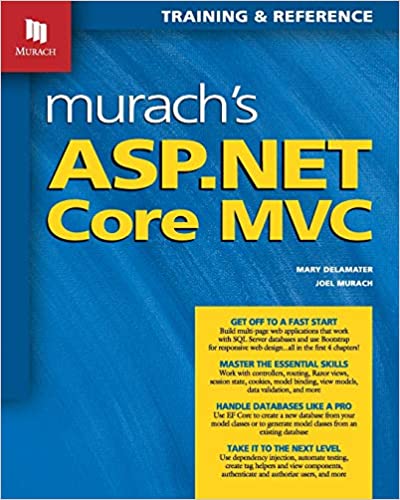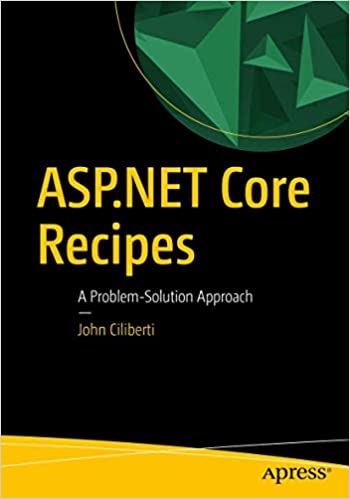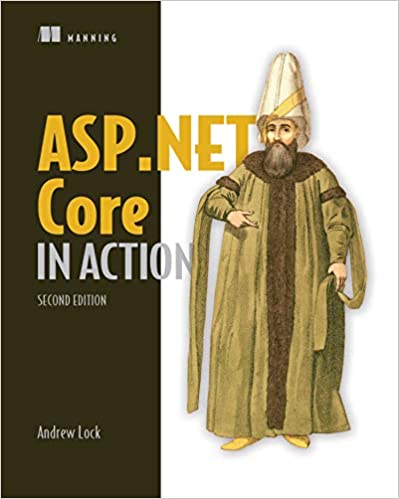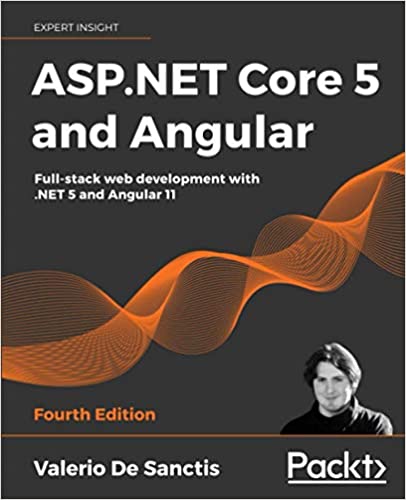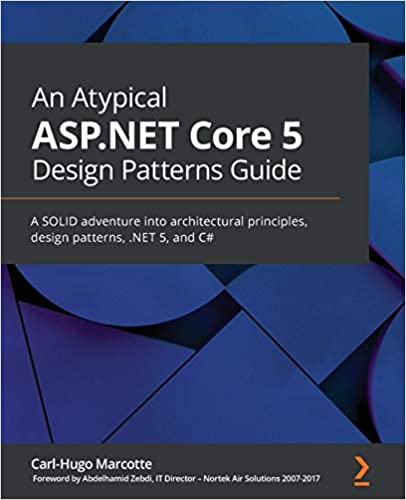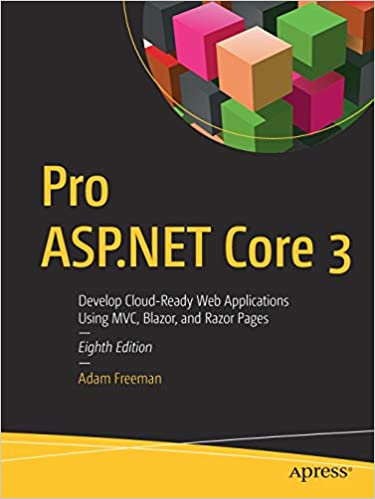Table of Contents
In today’s post you’ll discover the best ASP.NET books for this year.
Want to take a deep dive into the inner workings of this exciting framework?
Or do you just need something quick and easy?
Wherever you are on your coding journey, our list of best ASP.NET books has covered.
You’ll explore their:
- features
- layout
- content
- comparison
- and much more.
So let’s get to it!
What is ASP.NET?
ASP.NET is a server-side web application framework. Developed by Microsoft, it’s open-source and allows developers to build dynamic websites and applications.
What’s the difference between ASP.NET and ASP.NET Core?
The biggest difference is that ASP.NET was created for Windows while ASP.NET Core was created for Windows, Mac OS and Linux.
This post contains affiliate links. I may receive compensation if you buy something. Read my disclosure for more details.
TLDR: Best ASP.NET Books This Year
🔥 Best Overall 🔥
Murach’s ASP.NET Core MVC
💸 Best Value 💸
ASP.NET Core 5 and Angular
ASP.NET Books
🚨 WARNING: Our list of ASP.NET books is not for newbies.
With ASP.NET, you’re going to mix of a number of APIs, frameworks, developer environments and more.
It’s best if you have some experience with Microsoft web development before diving into ASP.NET. 🚨
1. Murach’s ASP.NET Core MVC
Using various exercises, you’ll learn how to develop real-world apps using C# for the model and controller classes.
And for the view files, you’ll use HTML, CSS and Razor (a markup syntax for embedding server-based code into webpages).
💡 A Model-View-Controller (MVC) is a software design pattern used for developing interfaces. It divides the program logic into three elements: model, view and controller. While traditionally used for GUIs, it’s also used to design web applications.
🍷 Pairs well with the course Learn ASP.NET on Codecademy Pro.
In our opinion, Murach’s ASP.NET Core MVC is one of the best ASP.NET books for students that know the basics of C#.
You’ll use Bootstrap classes for responsive design.
In addition, you’ll use Visual Studio for debugging and testing your apps.
💡 Visual Studio is an integrated development environment created by Microsoft. It’s used to develop web apps, websites, web services and computer programs.
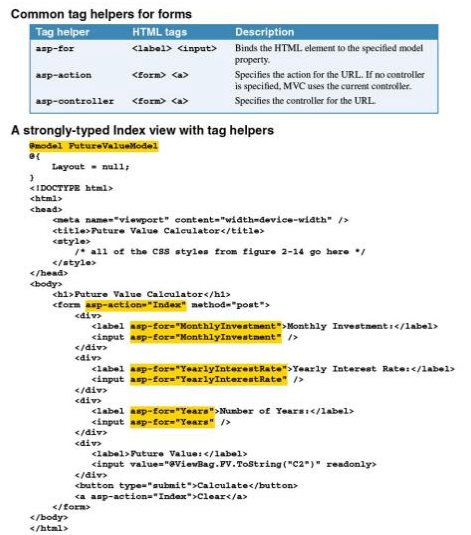
In the second section of Murach’s ASP.NET Core MVC, you’ll:
✅ create complex controllers
✅ handle cookies and sessions
✅ validate data
And much more.
By the end of the book, you’ll be able to authenticate users, automate testing and more.
2. ASP.NET Core Recipes: A Problem-Solution Approach
Using best practices, ASP.NET Core Recipes: A Problem-Solution Approach is a guide for developers working on modern web applications.
➡️ We think ASP.NET Core Recipes is one of the best ASP.NET books for learning methods for solving ASP.NET problems.
Like Murach’s ASP.NET Core MVC, you’ll start by exploring the MVC framework and development tools. You’ll also find plenty of recipes you can use to paste code from to solve problems.
🍷 Pairs well with the course Developing Applications with ASP.NET Core on Educative.io.
In addition, you’ll learn how to:
✅ take over HTML
✅ develop an application programming interface (API)
✅ migrate a project from ASP.NET to Core MVC
✅ use Visual Studio
You’ll also explore bottlenecks and test-driven development.
Finally, you’ll use Core MVC alongside JavaScript libraries jQuery, React and Bootstrap.
💡 A JavaScript library contains pre-written JavaScript functions. These functions are used for streamlined development of JavaScript applications.
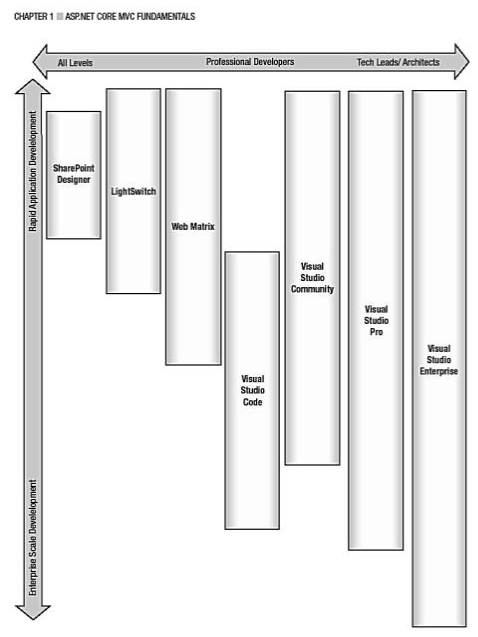
3. ASP.NET Core in Action, 2nd Edition
Unlike ASP.NET Core Recipes, ASP.NET Core in Action is intended for C# developers without any web development experience. But you should have an intermediate understanding of C#.
➡️ ASP.NET Core in Action is arguably one of the best ASP.NET books for intermediate C# developers.
The book starts off with a crash course in .NET Core.
Then you’ll build web applications step by step, all while adding features such as:
✅ logins
✅ configuration
✅ dependency injection
And more.
🍷 Pairs well with the Learning Track ASP.NET Web Development on Treehouse.
You’ll also examine key process steps such as security and testing. In addition, you’ll use Razor to generate dynamic pages. Then you’ll develop ASP.NET Core apps for non-Windows servers such as Linux and macOS.
ASP.NET Core in Action covers ASP.NET Core 5.0.
What this ASP.NET Developer thinks about ASP.NET Core in Action:
…As a visual learner, I especially liked the many figures that were used to explain various concepts…
– C. J. Anderson, ASP.NET Developer
4. ASP.NET Core 5 and Angular
ASP.NET Core 5 and Angular will teach you how to to build a fully functional web application. Similar to other books on our list, you’ll use ASP.NET Core 5 and Entity Framework Core for the back-end.
But you’ll also learn about using Angular 11 for front-end concepts.
💡 Angular is a JavaScript framework developed by Google. It’s meant to make your front-end development easier.
➡️ We believe ASP.NET Core 5 and Angular is one of the best ASP.NET books for creating, debugging and deploying web applications.
You’ll also get a full side-by-side comparison of Visual Code vs. NG App (used to define the root element of an AngularJS application).
Using the Entity Framework Core, you’ll learn how to build a data model. In addition, you’ll use Angular reactive forms to handle user input.
Then you’ll dive into progressive web applications (PWAs) and discover:
✅ technical requirements
✅ testing
✅ converting single web applications (SWAs) to PWAs
Finally, you’ll explore how to deploy your apps on Windows, Linux and Azure.
What this ASP.NET developer thinks about ASP.NET Core 5 and Angular:
A great book for newer developers learning full-stack development.
– Wes Doyle, ASP.NET Developer
5. An Atypical ASP.NET Core 5 Design Patterns Guide
In An Atypical ASP.NET Core 5 Design Patterns Guide, you’ll learn how to create robust, maintainable and flexible applications using design patterns. Like ASP.NET Core in Action, you’ll discover ASP.NET Core 5.
➡️ Atypical ASP.NET Core 5 Design Patterns Guide is perhaps one of the best ASP.NET books to learn how to apply software design patterns from small to cloud-scale.
You’ll also discover how to use Blazor for full-stack development with ASP.NET design patterns.
💡 Blazor is a Microsoft open source web framework that developers use to create SPAs using C# and HTML.
You’ll start by exploring:
✅ basic design patterns
✅ architectural principles
✅ dependency injection
And beyond.
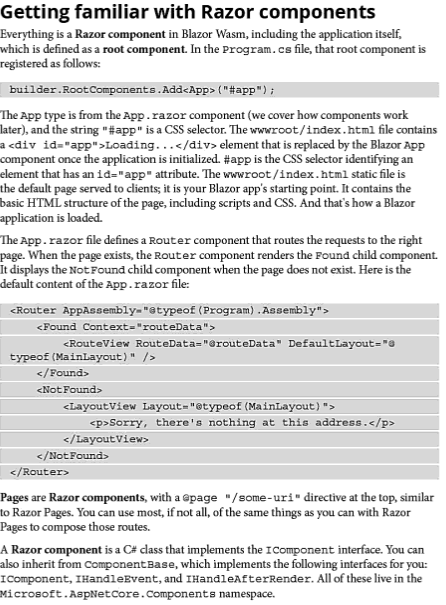
🍷 Pairs well with the guided project Getting Started with ASP.NET Core Razor Pages on Coursera.
Then you’ll discover component-scale patterns as well as application-scale patterns. You’ll explore many of the the popular Gang of Four design patterns like strategy, decorator and composite.
Finally, you’ll move to the client side, or front-end, to put together ASP.NET Core 5 as a full-stack option.
You’ll find plenty of use cases that will show you how to combine design patterns.
6. Pro ASP.NET Core 3
Pro ASP.NET Core 3 is a full-color guide that covers covers both ASP.NET Core 3 and ASP.NET Core 5. So it follows a similar path to ASP.NET Core in Action and Atypical ASP.NET Core 5 Design Patterns Guide.
➡️ Pro ASP.NET Core 3 may be one of the best ASP.NET books covering both ASP.NET Core 3 and ASP.NET Core 5.
First you’ll explore the tools needed to build modern, scalable web applications. This includes demonstrations of MVC 3, Blazor and Razor pages.
Starting from the ground up, you’ll discover:
✅ middleware components
✅ built-in services
✅ request model binding
And much more.
Then you’ll move on to more complex concepts like dependency injection.
In all, you’ll learn how to create RESTful web services, web applications and client-side applications.
💡 RESTful web services are highly scalable and maintainable. They’re used to create APIs for web-based applications.
By the end of this book, you should have a solid foundation and skill set to work with the ASP.NET Core platform.
ASP.NET Books: Conclusion
Today we looked at the best ASP.NET books including:
🔥 Best Overall 🔥
Murach’s ASP.NET Core MVC
💥 Best Value 💥
ASP.NET Core 5 and Angular
So whether you’re looking for best overall or a good value, we think there are ASP.NET books for just about every developer.
Readers of Best ASP.NET Books are also reading:
- 6 Best ASP.NET Courses
- 8 Best .NET Books
- How Much Do Freelance Web Developers Make?
- Coder Coder Interview
- Web Dev Simplified Interview
What are the best ASP.NET books?
While we reviewed many ASP.NET books, two came out on top. Overall, we think Murache’s ASP.NET Core MVC book is the way to go. And for value, we think ASP.NET Core 5 and Angular has the most bang for its buck. Learn more about these and other ASP.NET books in today’s post.
What’s the difference between ASP.NET and ASP.NET Core?
ASP.NET is a server-side web application framework. Developed by Microsoft, it’s open-source and allows developers to build dynamic websites and applications. The biggest difference is that ASP.NET was created for Windows while ASP.NET Core was created for Windows, Mac OS and Linux. Learn more about ASP.NET and ASP.NET Core in today’s article.
Is ASP.NET Core in Action worth it?
ASP.NET Core in Action is intended for C# developers without any web development experience. But you should have an intermediate understanding of C#. The book starts off with a crash course in .NET Core. Then you’ll build web applications step by step, all while adding features such as logins, configuration, dependency injection, and more. You’ll also examine key process steps such as security and testing. In addition, you’ll use Razor to generate dynamic pages. Then you’ll develop ASP.NET Core apps for non-Windows servers such as Linux and macOS. ASP.NET Core in Action covers ASP.NET Core 5.0. Learn more about this and other ASP.NET books in today’s post.
![6 best asp.net books this year [learn asp.net core asap]](https://realtoughcandy.com/wp-content/uploads/2021/05/new-cover-best-asp-net-books-1024x576.jpg)
